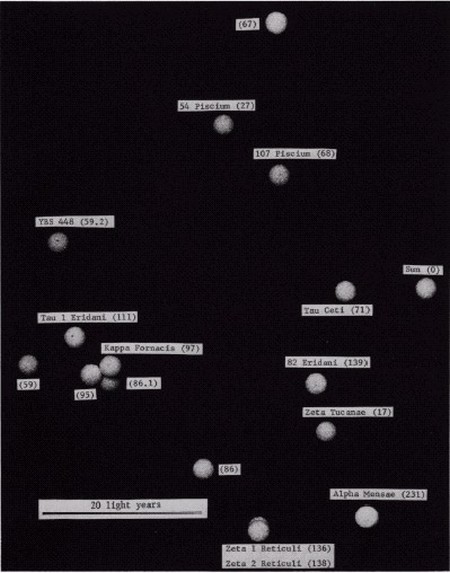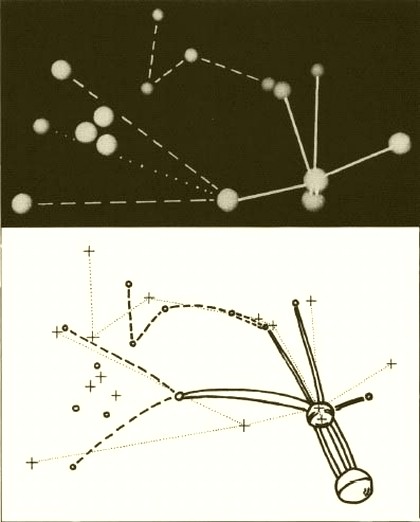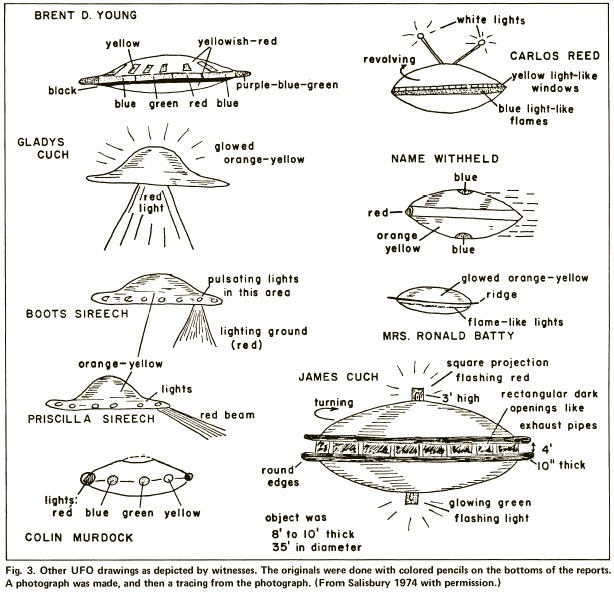Recent Developments in the
Scientific Study of UFO's
Frank B. Salisbury
(Reproduced with permission of the author, © Frank B. Salisbury)
BioScience, Vol. 25, No. 8. (Aug., 1975), pp. 505-512.
This article is written to recount a few important events since 1967. The problem is persistent, and an increasing number of scientists are becoming interested. The Aerial Phenomena Research Organization (APRO) now lists over 40 scientifically trained consultants who are at least willing to consider the ETI hypothesis and to take part in investigation of cases. The Center for UFO Studies was recently organized (see below), being made up exclusively of scientifically trained individuals (22 so far). A few scientists say that they are convinced of the validity of the ETI hypothesis as an explanation for many UFO's. Others (including myself) are not willing to go quite that far, although we emphasize that the evidence for ETI is strong. A few scientists continue to reject ETI as an explanation for the UFO phenomenon.
The noise level (i.e., the percentage of cases explained under the first four hypotheses) remains high, but the absolute number of truly interesting cases is also high (at least tens of thousands). The question of whether these cases may respresent a meaningful signal is probably the main reason why an increasing number of scientists have become interested.
Of course the exobiological implications of the ETI hypothesis are also extremely intriguing. There is much talk today about the problems involved in discovering life on other planets. But consider the implications if such life has already discovered us! (Although if it has, it must not want to be friends in the sense of establishing formal, diplomatic relationships with the governments of earth.) There have been a number of interesting developments since 1967 that also add interest to the topic. Some of these are political, some organizational, some methodological, and some concern specific cases.
POLITICAL DEVELOPMENTS
As everyone knows, a contract was signed in 1967 between the United States Air Force and the University of Colorado for support of a scientific evaluation of the UFO phenomenon under the direction of the late Edward U. Condon. The final report was released in 1969 after being submitted to the National Academy of Sciences (Condon 1969). The rather thick volume details investigations of 59 cases by Condon's staff, which (including consultants, etc.) consisted of 1 psychiatrist, 7 psychologists, 6 engineers, 13 physicists and/or-astronomers, 4 meteorologists, 7 editor-indexer-photojournalist-programmers, and not one biologist!
The introduction was written by Condon and is an extremely negative statement, concluding that UFO's are not worthy of scientific study. This statement had an immediate and profound impact upon public thinking. The public is fickle, however, and this negative impact was relatively short-lived. A 1973 Gallup poll indicated that about 11% of the population of the United States claims to have seen a UFO and that over 50% accept the ETI hypothesis; these figures are slightly more than double comparable figures obtained in 1965. As the Condon report was studied more carefully, the introduction by Condon was increasingly ignored. The investigations were in depth, and the report includes a number of extremely fascinating unsolved cases that have been used to support the ETI hypothesis and the contention that UFO's are indeed of the highest intrinsic scientific interest.
Furthermore, discovery and publication of a memo written by Robert J. Low (who became project coordinator) three months before the contract was awarded clearly demonstrated that the study was prejudiced from the beginning. It includes the following passage: "The trick would be, I think, to describe the project so that, to the public, it would appear a totally objective study but, to the scientific community, would present the image of a group of nonbelievers trying their best to be objective but having an almost zero expectation






